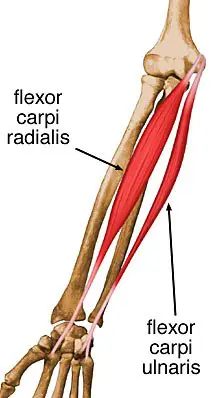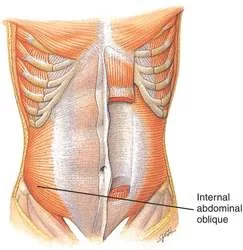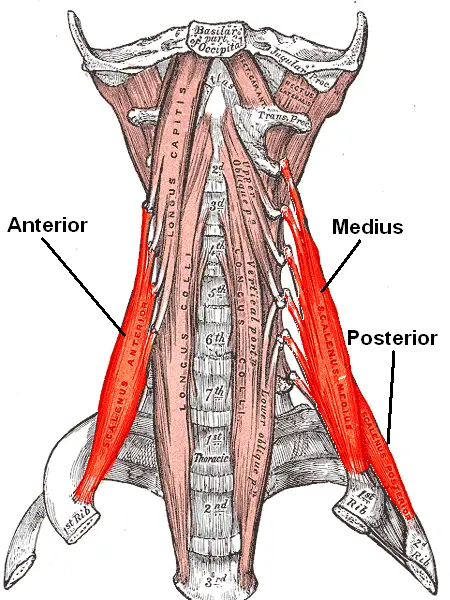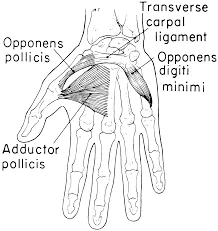Flexor Carpi Radialis Muscle
Table of Contents
Flexor Carpi Radialis Muscle Anatomy
The flexor carpi radialis muscle is a relatively thin muscle located on the anterior part of the forearm.
Origin
It originates from the medial epicondyle of the humerus.
Insertion
It inserts on the anterior aspect of the base of the second metacarpal, and has small slips to both the third metacarpal and trapezial tuberosity.
Course
The muscle belly travels obliquely from the medial epicondyle, passing from the ulnar to the radial aspect of the forearm. It releases a long tendon in the lower third of the forearm that enters the palmar surface of the hand beneath the flexor retinaculum. The tendon travels through its own synovial sheath inside the flexor retinacular region. It then travels through a groove on the surface of the trapezium bone and over the palmar surface of the scaphoid bone. Subsequently, the tendon attaches itself to the palmar surface of metacarpal bones 2-3.
Nerve supply
The medial nerve supplies the muscle.
Blood supply
Flexor carpi radialis is mostly supplied by a branch arising high in the forearm from the anterior or posterior recurrent ulnar arteries. The rest of its nutritional needs are fulfilled by 6-8 branches of the radial artery.
Action
It flexes and abducts hand at wrist joint.
Function
Flexor carpi radialis pulls the hand proximally and laterally, meaning that it is able to produce the combined motion of wrist flexion and wrist abduction (radial deviation). Acting together with flexor carpi ulnaris and palmaris longus, it produces a balanced flexion of hand, i.e. flexion without abduction.
However, when it works in synergy with extensor carpi radialis longus and brevis, the net result of their counteracting forces is a balanced hand abduction. The muscle contributes to pronation as it obliquely crosses the forearm. It is also active during extension of the digits, preventing unwanted extension of the hand.
Relations
The flexor carpi radialis is located superficially to the flexor digitorum superficialis muscle and deeply to the forearm skin. It is medial to the pronator teres in its proximal portion and lateral to the brachioradialis in its distal portion. It is lateral to the palmaris longus. The tendinous fibers that join to the oblique head of the adductor pollicis muscle in the hand are deeply positioned.
As far as neurovascular structures go, the muscle’s proximal portion protects the median nerve before it crosses the flexor digitorum superficialis muscle. The radial artery, which runs between the tendons of the brachioradialis and flexor carpi radialis muscles just proximally to the wrist, is a typical location to palpate in order to determine someone’s radial pulse.
Strengthening Exercise
1. Towel Crush:

- Your forearm should start by resting on the table. You can be seated or standing.
- The towel should be in your hand, rolled up or formed together to make a ball.
- When you‘re ready, squeeze the towel and hold for ten seconds (or as long as you can up to 10 seconds).
- Release and repeat, 3 sets of 10 reps.
2. Wrist Curves:
- Sit on a chair or stand near a desktop with a dumbbell in your right hand. Your feet should be about shoulder-width apart.
- Your right arm should be rested on the tabletop with your palm and dumbbell facing up.
- When you‘re ready, lower the dumbbell down to the ground while holding on tightly.
- Once you‘ve reached the lowest point, curl back up to the top of the movement again, contacting the muscles in your forearms. Keep your forearm steady since your wrist is the only part of your arm that should be moving.
- Do a set of ten repetitions and then switch arms. Complete for three sets.
Stretching Exercises:
1. Wrist Flexor Stretch:

- To stretch your wrist flexors, begin by holding your right arm straight out in front of you. The palms of your hands should face outwards.
- Take your left hand, hold the fingers of your right hand, and bend them backward. You should feel the stretch on the inside of your right forearm.
- Hold the stretch for 10-15 seconds, repeating as needed.
Related pathology
Flexor tendon ruptures in the wrist are uncommon. Flexor carpi radialis (FCR) tendon rupture can occur in rheumatoid patients, following cortisone injection for Tenosynovitis, and following trauma. Attritional FCR tendon ruptures are also seen with scaphotrapezial arthritis.




